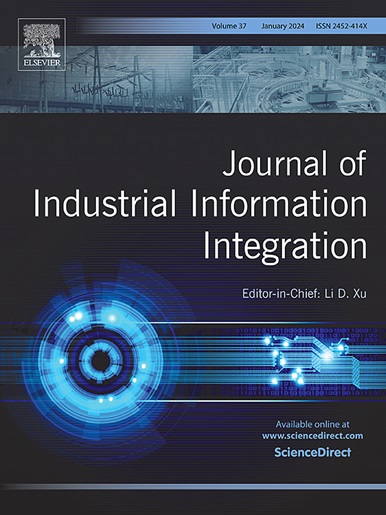设计和实施主动负载测试台,用于对工业应用中的伺服机构进行高精度评估
IF 10.4
1区 计算机科学
Q1 COMPUTER SCIENCE, INTERDISCIPLINARY APPLICATIONS
引用次数: 0
摘要
位置控制伺服机构是柔性制造工厂的核心要素,主要用于驱动机器人系统和自动化机器。为了满足特定的扭矩和成本要求,典型的伺服机构布置包括精密减速器,这些减速器会产生运动误差,严重限制了最终性能的实现。这种误差的建模非常复杂,取决于速度、动态负载条件和温度。准确的特征描述是开发数字孪生系统和先进控制策略的基础,旨在对其进行主动预测和补偿。为了正确评估伺服机构的行为并建立高保真虚拟模型,有人提出了仪器测试平台,它可以复制在实际工业环境中遇到的随时间变化的工作条件。在此背景下,本文介绍了一种用于开发主动加载装置的新型工程方法,即一种可编程机电一体化装置,它能以高度动态的方式提供定制负载。所提议的系统由二级伺服电机和相关旋转矢量减速器组成,集成并同步于现有的仪器测试平台,并通过可编程逻辑控制器在扭矩模式下进行控制。论文主要侧重于描述所实施的闭环控制以及相关的调整和校准过程,证明所提出的解决方案避免了可能影响系统最终效果的重要测量误差。研究最后探讨了引入滤波器进一步提高系统性能的潜在好处。最后,为了证明稳定钻机的重要性并证明控制参数对其测量的影响,采用不同的参数设置进行了一项旨在评估减速器传输误差的标准测试。本文章由计算机程序翻译,如有差异,请以英文原文为准。
Design and implementation of an active load test rig for high-precision evaluation of servomechanisms in industrial applications
Position-controlled servomechanisms are the core elements of flexible manufacturing plants, primarily utilized to actuate robotic systems and automated machines. To match specific torque and costs requirements, typical servomechanism arrangements comprise precision reducers, which introduce motion errors that heavily limit the final performance achievable. Such errors are complex to model and depend from speed, dynamic loading conditions and temperature. Accurate characterization is fundamental to develop digital twins and advanced control strategies aimed at their active prediction and compensation. To properly assess the servomechanisms behavior and elaborate high-fidelity virtual models, instrumented test rigs have been proposed which can replicate the time-varying working conditions encountered in real industrial environments. In this context, the present paper reports about a novel engineering method for developing an active loading apparatus, namely a programmable mechatronic device that can deliver custom loads in a highly dynamic manner. The proposed system, consisting of a secondary servomotor and related rotating vector reducer, is integrated and synchronized within an existing instrumented test rig and is controlled in torque mode via a programmable logic controller. The paper mainly focuses on the description of the implemented closed-loop control and on the related tuning and calibration processes, demonstrating that the proposed solutions avoid important measurement errors that could compromise the final effectiveness of the system. The study finally explores the potential benefits of introducing a filter to further enhance system performance. At last, to prove the importance of stabilizing the rig and demonstrate the influence of the control parameters on its measurements, a standard test aimed at assessing the reducer transmission error is conducted adopting different parameter settings.
求助全文
通过发布文献求助,成功后即可免费获取论文全文。
去求助
来源期刊

Journal of Industrial Information Integration
Decision Sciences-Information Systems and Management
CiteScore
22.30
自引率
13.40%
发文量
100
期刊介绍:
The Journal of Industrial Information Integration focuses on the industry's transition towards industrial integration and informatization, covering not only hardware and software but also information integration. It serves as a platform for promoting advances in industrial information integration, addressing challenges, issues, and solutions in an interdisciplinary forum for researchers, practitioners, and policy makers.
The Journal of Industrial Information Integration welcomes papers on foundational, technical, and practical aspects of industrial information integration, emphasizing the complex and cross-disciplinary topics that arise in industrial integration. Techniques from mathematical science, computer science, computer engineering, electrical and electronic engineering, manufacturing engineering, and engineering management are crucial in this context.
 求助内容:
求助内容: 应助结果提醒方式:
应助结果提醒方式:


